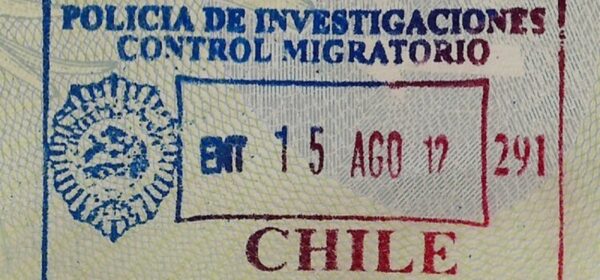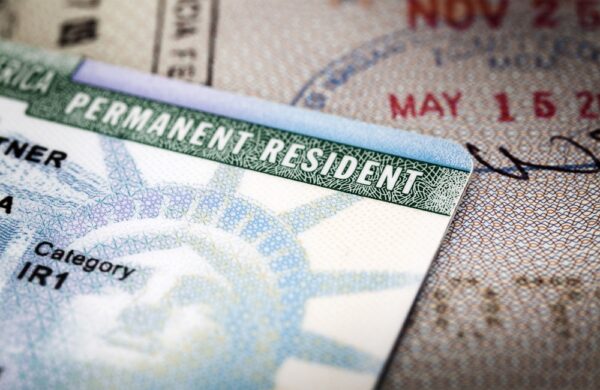Mexico, rich in heritage and great food, has produced talented painters such as Frida Kahlo. The country boasts stunning landscapes, spectacular beaches, and numerous UNESCO World Heritage Sites, making it a unique immigrant destination. Mexico immigration process may seem overwhelming, but it's quite simple if you have the right information. Here, we'll provide a clear roadmap to navigate the timeline, procedures, and requirements. Prepare to make your Mexican dream a reality!
Mexico Immigration Process
The first thing to understand about immigration to Mexico is the visas. You can't enter the country without a visa, talkless of immigrating permanently. Yes, that’s one of their immigration laws. However, not everyone is required to obtain a visa before traveling to Mexico. There is a list of nations whose citizens can enter Mexico without a visa and live for up to 180 days. This comprises the US, the countries that comprise the EU and EFTA, Australia, Canada, etc. So, if your country of origin is not among these, start processing your visa. After you get your visa from the Mexican government, you're now free to immigrate.
Types of Mexico Visas
There are just three categories of Mexico visas, depending on how long you intend to stay in the country.
1. Mexico Tourist Visas
These are granted for a maximum 180-day brief stay. They are given to foreign citizens with valid visas who wish to go to Mexico for leisure, business, sightseeing, or any other non-work-related reason. You will have to collect your tourist card from your country of origin before traveling. Also, you’ll need your tourist card to be on you at all times while enjoying the beaches of the Pacific coast.
2. Mexico Temporary Resident Visas
This visa is granted to visitors wishing to stay in Mexico for more than six months but no more than four years. So, if you’re planning Mexico immigration, this is for you. All temporary residency cards have a one-year expiration date; in order to continue living legally in Mexico, you must renew your card for an additional one, two, or three years after the first year.
You have four options after obtaining temporary status: Request to exchange the visa for permanent residency, go through a regularization process to reapply for temporary residency or depart the country. In short, if you're thinking of relocating to Mexico City but for a maximum of four years, this visa is for you. The Mexican authorities will guide you through the process.
Furthermore, there are more categories for temporary residence visas, including:
- Mexico student visa: This is for any foreigner who wishes to study in Mexico for more than six months.
- Mexico family visa: This is for any foreigner who intends to join a family member who lives in Mexico. They have to apply for this visa, especially if they're staying for more than 6 months.
- Mexico digital nomad visa: A visa for digital nomads is a kind of permit that lets someone work remotely in another country.
- Mexico work visa: This visa is for any foreigner who intends to work in Mexico for no more than 4 years.
3. Mexico Permanent Resident Visa
This visa is for foreign citizens who wish to reside in Mexico permanently. Permanent residency in Mexico is also available to foreign nationals who have lived there for at least four years as temporary residents or who have close familial ties to Mexico. This visa is also for you if you’re considering immigration to Mexico.
Permanent Residency Eligibility
Mexican authorities will check your eligibility whenever you request permanent residency. For an applicant to be eligible for a permanent residence visa, they must:
- Be related to a certain extended family in Mexico or
- Must apply for retirement status and establish that they have enough qualifying monthly income or savings (retirement is a requirement for some consulates) or
- Possess the status of a regular temporary resident for four years in a row or
- Possess a valid temporary residency status for two consecutive years obtained by marrying a Mexican national or a permanent resident holder or
- Fulfill the Points System's minimal scoring requirements, or
- Be given permission to reside either through political asylum or humanitarian grounds.
You have to apply for the Permanent Resident permit at a Mexican embassy outside of Mexico; it cannot be granted to you in Mexico, except for a few notable exceptions.
Mexico Visa Requirements
Here are the documents you must submit for your Mexico visa application:
1. Visa Application Form
The first document you must collect is a Visa Application Form when applying for a visa to travel to Mexico. While some Mexican embassies provide it in person when you submit your application, others need you to download it from their website. The next steps are to either fill out the form on the computer and print it or fill it out by handwriting legible typed letters after printing.
2. Valid Passport
Besides the Application Form, the primary document required for a Mexico visa is a passport. The validity of the passport must not expire before you enter Mexico and must have been issued within the last 10 years. It must contain blank pages so the Mexican embassy personnel can attach your visa.
3. Passport Photocopy
Include a photocopy of the necessary pages of your passport, like the first and last pages, as well as any adjustments, stamps, or previous visas.
4. Passport-size Pictures
You have to submit passport-size pictures along with your documents. Make sure they’re clear and follow the guidelines.
5. Proof of Return Travel Ticket
Another key Mexico visa requirement is to confirm that you intend to leave Mexico after your vacation. Mexico embassies may ask you to show that you have purchased a return flight ticket or a travel plan; you are not required to buy the ticket before receiving your visa. You do not need this document if you intend to relocate to Mexico.
6. Evidence of Sufficient Financial Means
You need to be able to demonstrate that you have the resources necessary to pay for your entire stay in Mexico.
7. Proof of Accommodation
Throughout your visit, you must be able to provide documentation proving that you have lodging in Mexico. Evidence of a hotel reservation or travel lodging may be submitted. Provide identification or a residency permit from your host if you reside with them.
8. Cover Letter
Some can ask you to submit a cover letter addressed to the Mexican embassy. It would help if you described your trip's specifics, including the dates of arrival and departure, the location of your accommodations, and your desire to visit Mexico.
9. Visa Fee Receipt
You also have to pay a non-refundable visa application fee. Several payment methods may be accepted depending on the embassy you apply to. While some need payment in advance through a bank account, others simply take cash.
10. Employment Status Documents
You have to provide proof of employment as part of your application status. The documents may vary depending on whether you're employed, self-employed, or a student.
You must submit all of your documents in either English or Spanish. If not, they must be translated into Spanish by a certified translator, and both the original and the translated text must be attached. Legalization is required for all official documentation. Documents can be legalized with an apostille stamp or, if your country is not a party to the Apostille Convention, at the Mexican embassy. The Mexican embassy asks for the freedom to request any further documentation they find necessary. The Mexican immigration authorities are in charge of all applications.
Additional Documents for Temporary Residence Visa
For Mexico immigration purposes, here are the documents you need to submit if you're applying for a Mexico student visa:
- Student visa processing fee
- A confirmation of enrollment letter from the school was sent to the Mexican embassy
- Investment or bank statement during the past three months
Here are the additional documents you need to submit if you're applying for a Mexico family visa:
- Proof of confirmation of family relationships such as birth certificates or marriage certificates.
- Evidence of financial stability in the form of pay stubs, savings accounts, or bank statements from the previous year.
- Should a member of your family possess a resident card, both their resident card in original and duplicate form.
- Should a member of your family be a foreign student, an official letter from their school attesting to their enrollment.
How to Apply for A Mexico Visa
The visa application process is quite simple; here are the steps to follow;
1. Set Up an Appointment at the Mexico Embassy
The application process for a Mexico visa may vary based on the country you're applying from. Mexico embassy offices have unique criteria, such as visa fee payment methods, business hours, and appointments. For this reason, getting in touch with an embassy in your country is the first step in Mexico's visa application process. It is best to schedule a Mexico visa appointment at least four weeks before your intended trip.
2. Download and Fill Application Form
Next, you have to download and fill out the visa application form. The application form is available on the Mexican embassy website where you plan to submit your application. You may pick up your application form at the embassy when you apply. You have two options for filling out the form: either type the information on your computer (if possible) and then print it, or write readable text after printing.
3. Gather the Required Documents
To support your application for a Mexico visa, you must provide a number of necessary papers. There are other documentation pertaining to the reason for your trip.
4. Submit Application
You must turn in the application and supporting documentation to the Mexican embassy on the day of your scheduled appointment. The Mexican officials will guide you through the process. Additionally, there is a cost for a Mexico visa. A Mexican visa typically costs roughly $36.
However, the visa cost may vary based on the kind of visa you're requesting and the country where you submit your application. Every country has a different payment mechanism; some might ask for cash payments, while others might demand an upfront bank transfer.
Mexico Visa Processing Time
The particular embassy you are applying to will determine how long it takes to process a Mexican visa. While some can complete your visa in as little as two days, others can take up to four weeks. It also depends on whether you need a visa for Mexico immigration. To find out how the duration to process your visa, you must visit the website of the Mexican embassy where you want to apply or get in touch with them.
This is because different embassies operate at different speeds; whereas one may process your visa in two working days, another may require ten. Because of this, a few embassies advise making your appointment at least four weeks before booking your airplane tickets.
Benefits of Relocating to Mexico
1. Affordable Healthcare
Mexican immigrants can afford medical treatment, which appeals to many Americans. The foreign-born population does not affect the healthcare system. Excellent rates are also available for any type of insurance package. Public healthcare is available to foreign workers in Mexico as well as permanent residents, while private institutions provide top-notch resources and services.
2. Tax Advantages
The tax system in Mexico is quite beneficial for foreign residents who own property and operate businesses. This is why the country is among the most popular destinations to relocate to. Some tax benefits are a 10% dividend tax, no capital duty, no stamp duty, no payroll tax, and transfer taxes ranging from 2% to 5%. Also, the U.S. customs and border protection guarantees international trading.
3. Great Accommodation Options
Mexico immigration is ideal for foreigners because of great accommodation options. There are plenty of elegant condos, haciendas, and villas available for those seeking a luxurious lifestyle. Budget-conscious Mexican immigrants can also easily locate a cozy house, apartment, or shared flat by browsing internet portals, networking, social media, or driving through potential neighborhoods.
4. Vibrant Culture
Mexico is a popular destination for relocation because it is one of the world's most culturally diverse nations. Mexican immigrants can partake in Mexican food and festivities, including Dia de la Candelaria, Independence Day, Day of the Virgin of Guadalupe, and other Mexican Carnivals.
5. Excellent Education
Moving to Mexico with kids? Different schooling options are available to fit their needs, language, and desired educational system. Children who attend international and private schools benefit from a combination of British, American, Japanese, and Mexican curricula and languages, aiding their transition.
Conclusion
Mexico immigration can be a complex journey, but it can lead to a brighter future with the right guidance. By understanding the process and taking the right steps, individuals can successfully navigate their path to a new life in Mexico.















